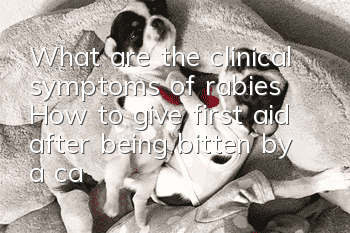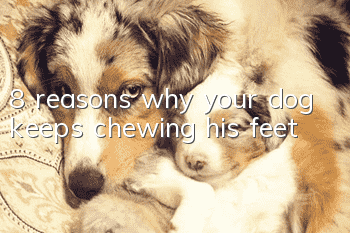What are the clinical symptoms of rabies? How to give first aid after being bitten by a cat or dog?

With the increasing number of people walking dogs on the streets, many friends have also come up with the idea of raising a dog. However, some friends are afraid to take action due to concerns about rabies, a somewhat terrifying infectious disease. So what are the clinical symptoms of rabies? How to give first aid after being bitten by a cat or dog?
Rabies is an acute infectious disease caused by humans being bitten by dogs, cats, wolves and other animals and infected with the rabies virus. The rabies virus can multiply in the salivary glands of dogs and infect humans through the residual saliva in the wound. Infect. The main symptoms in humans include excitement, hydrophobia, pharyngeal muscle spasm, dyspnea, progressive paralysis and death. The incubation period is 20-90 days. Once the disease develops, there is currently no effective drug for treatment, and the fatality rate is extremely high, almost 100%.
Typical mad dogs often show symptoms of erect ears, staring directly, red eyes, salivation, weight loss, barking and running around, biting people in sight, and unsteady walking; there are also a few mad dogs that are quiet and live alone. , When disturbed, he screams wildly, sticks out his tongue and salivates. Until the whole body was paralyzed and died. Although some dogs and cats do not show symptoms of "rabies", they do carry rabies virus. After they bite people, they can still infect people with rabies virus and get "rabies".
So after a person is bitten by a dog or cat, regardless of whether it was definitely caused by a mad dog at the time, the wound must be treated promptly according to the following methods:
If the wound bleeds, as long as it does not bleed too much, do not rush to stop the bleeding, because the blood flowing out can wash away the residual mad dog saliva from the wound, which will naturally have a certain disinfection effect.
For wounds that don’t bleed much, squeeze the bleeding from the proximal end toward the wound to facilitate detoxification. At the same time, the wound must be cleaned thoroughly as soon as possible within two hours after the injury to reduce the chance of rabies. Use a clean brush, which can be a toothbrush or gauze, and strong soapy water to repeatedly scrub the wound, especially the deep part of the wound, and rinse it with clean water in time. Don't refuse to scrub carefully because of pain. The scrubbing time should last at least 30 minutes. After rinsing, smear the wound with 70% alcohol or 50-70% liquor several times. Without anesthesia, the pain will be obvious when smearing, so the wounded should be mentally prepared. After application, the wound does not need to be bandaged and can be left uncovered.
Old and new wounds on other parts that are scratched, licked, or contaminated by saliva from dogs should be treated in the same way as bites. After the above wound treatment, the injured should be sent to a nearby hospital or health and epidemic prevention station to receive rabies vaccine as soon as possible.
- How to train a dog to sit down and not move? You need to repeat this training process!
- What are the best training methods for a two-year golden retriever?
- How to treat dog vomiting
- Will a dog die if he eats food with a small amount of cocoa powder?
- When is the best time to vaccinate puppies?
- Is frequent and urgent urination in dogs caused by cystitis?
- What medicine is the fastest for dogs to have diarrhea?
- What to do if a puppy that is more than a month old bites someone
- The dog’s eyes are moist and he looks like he’s crying
- When the dog comes, how often does the aunt come and how many days does it take?



